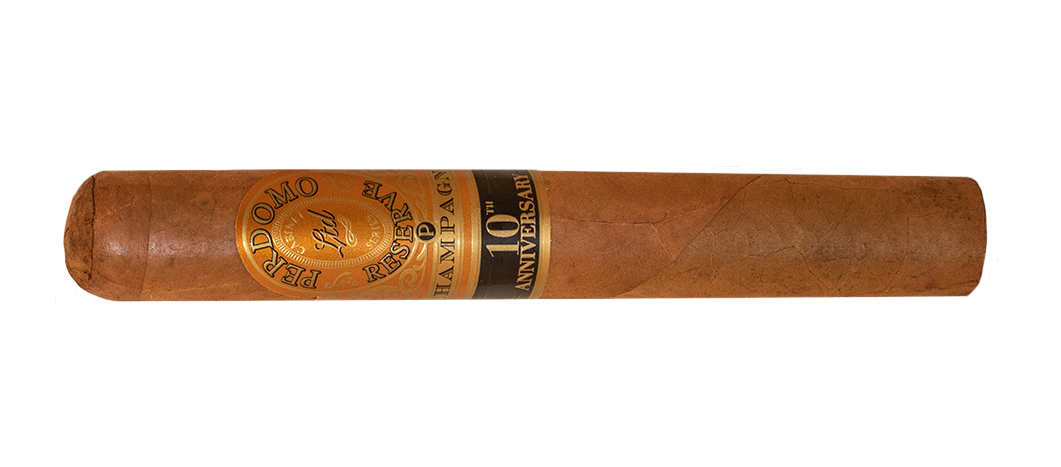According to a press release from the FDA, any brand that had a quantity count change after 2007, constitutes a new product. Something that the cigar industry is sure to challenge.
The FDA issues a new press release today that included a link to a FAQ answering some questions in regards to Substantial Equivlence. The press release states, “Today, the FDA is issuing the third edition of the guidance for industry titled Demonstrating the Substantial Equivalence of a New Tobacco Product: Responses to Frequently Asked Questions (Edition 3). This new edition has been revised to reflect the decision by the U.S. District Court for the District of Columbia that a modification to an existing product’s label does not result in a “new tobacco product.”
Based on the court’s ruling, modifications to an existing product’s label alone—such as a product with a new name that is otherwise identical to its predicate product—would not require the manufacturer to submit a Substantial Equivalence (SE) application. However, any changes to an existing product’s quantity—such as changing the number of cigarettes in a package from 20 to 24—does result in a “new tobacco product” and would require a submission for premarket authorization. FDA’s interpretation regarding product quantity changes was upheld in the court’s final decision.
In scenarios when a product quantity is the only change to a tobacco product eligible for the SE pathway, a manufacturer may submit a streamlined SE application referred to as a “Product Quantity Change SE Application.” These applications require less information from manufacturers than full SE applications and will better enable the agency to quickly review them. This edition of the guidance answers many questions on these types of streamlined applications, in addition to questions about changes to additives and the SE application process in general.”
The FAQ can be found at: https://www.fda.gov/downloads/TobaccoProducts/Labeling/RulesRegulationsGuidance/UCM436468.pdf and some of the questions that stand out are as follows…
Question 1:
Does a change to a product quantity in the package render a product a “new tobacco product” subject to the premarket review provisions of the FD&C Act?
Response:
Yes, the introduction of a product for which the product quantity in the package changed (e.g., the number of portioned parts per package has changed such that the new product would hold 24 cigarettes per pack instead of 20; the weight of the product has changed such that the new smokeless package would change from 24 grams to 5 grams), even if the per weight composition8 of additives, ingredients, and other features remains the same, renders it a new product under section 910(a)(1) of the FD&C Act because the characteristics (e.g., amounts of ingredients, materials, other features) have changed. As defined in section 910(a)(1), a new tobacco product is:
(A) any tobacco product (including those products in test markets) that was not commercially marketed in the United States as of February 15, 2007; or,
(B) any modification (including a change in design, any component, any part, or any constituent, including a smoke constituent, or in the content, delivery, or form of nicotine, or any other additive or ingredient) of a tobacco product where the modified product was commercially marketed in the United States after February 15, 2007.
Changing a product by altering the quantity in the package is a modification of that product (e.g., a change in amounts of ingredients, materials, other features) resulting in a new product under section 910(a)(1), thus requiring premarket authorization.
However, we have determined that changes to product quantity (when all other product characteristics remain identical) will require a reduced set of information in order for FDA to determine whether the new product is substantially equivalent within the meaning of section 910(a)(3). Thus, if a product quantity has changed, but the per weight. For example, the pack, box, carton, container, or wrapping (such as cellophane), in which a tobacco product is sold to consumers. The manner in which the materials (e.g., ingredients, additives, and biological organisms) are arranged and integrated to produce a finished tobacco product has composition, design features, heating source, and all other features are otherwise identical to the predicate tobacco product, the manufacturer or importer may opt to submit a “Product Quantity Change SE Application”9 as discussed in more detail in the following questions and answers.
Question 2:
Would a tobacco product be a “new tobacco product,” and subject to the substantial equivalence provisions of the FD&C Act, if the tobacco product was commercially marketed as of February 15, 2007, but subsequently the quantity of product sold in a package is changed (e.g., the number of portioned parts per package has changed such that the new product would hold 24 cigarettes per pack instead of 20; the weight of the product has changed such that the new smokeless package would change from 24 grams to 5 grams)?
Response:
Yes. If a tobacco product was commercially marketed as of February 15, 2007, but subsequently the quantity of the tobacco product is changed, the product is a new tobacco product under section 910(a)(1) of the FD&C Act. If the only change to the tobacco product is a change to product quantity and the per weight composition inside the package remains identical, the manufacturer may submit a Product Quantity Change SE Application as an alternative to a full (more detailed) SE application or premarket application under section 910(b) of the FD&C Act (as discussed in the response to question 5).
Question 3:
What purpose is served by the submission of the Product Quantity Change SE Applications?
Response:
As discussed in the response to question 1, the Product Quantity Change SE Application provides FDA with information needed to conduct the premarket review and issue the order required before a new tobacco product may be marketed (section 910 of the FD&C Act). Congress enacted the Tobacco Control Act to provide FDA with broad authority to regulate the introduction, marketing and advertising of tobacco products based in large part on its determination that such regulation would provide significant health and economic benefits to the public. See Tobacco Control Act, Finding 12. Congress also directed FDA to reissue a 1996 final rule that imposed restrictions on breaking apart cigarette and smokeless packages because of concerns about quantity and use by youth (section 102 of the Tobacco Control Act; 21 CFR 1140.14(d)). Product Quantity Change SE Applications involve modifications that result in the new tobacco product having different characteristics from the predicate tobacco product. A change in quantity is a change to the amount of ingredients, materials, and other features within the new tobacco product as compared to the predicate tobacco product. The Product Quantity Change SEAs described in this sction, the Product Quantity Change SE Report would be an alternative to submitting a full SE application or a premarket application under section 910(b) of the FD&C Act.
Application is intended to provide manufacturers with a more limited and less burdensome application to support a determination that the new product does not raise different questions of public health.
Changes in product quantity can affect initiation and cessation, such as by affecting consumer harm perceptions, use intentions, and use behavior. The information in these Product Quantity Change SE Applications would allow for FDA to fully evaluate the potential of such changes in product quantity to determine whether the new product raises different questions of public health such that the product should be required to submit a premarket application. Smaller product quantities may allow for increased product uptake due to lower barriers to trying the product, are associated with lower product harm perceptions, and reduce product costs or increase product availability, all of which may affect use intentions and behavior, including initiation among youth.10 Larger product quantities can potentially reduce cessation behaviors and increase tobacco product use among current users.11 Additionally, changes in product quantity may make the product appear novel to consumers, increasing appeal and lowering harm perceptions, both of which may lead to increased product use and initiation. Failure to submit such data, or submission of assertions without scientific justification, hinders FDA’s ability to fully evaluate the effects of product quantity changes and determine whether the new product raises different questions of public health.
Question 4:
When I have a tobacco product that is to be marketed in a different quantity, but is otherwise identical to one of my products that was commercially marketed as of February 15, 2007 (or one of my products that has been found by FDA to be SE), should I submit a full SE application that contains all of the information FDA recommends including in its Demonstrating SE Guidance?
Response:
No. Section 905(j) authorizes the agency to determine the form and manner of the SE application. FDA has determined that, if you have a tobacco product that is provided in a different quantity, but is otherwise identical (i.e., identical per weight composition, design features, heating source, and other features of the product) to either a tobacco product that was commercially marketed as of February 15, 2007, or a product that has been found by FDA to be substantially equivalent, you may submit a streamlined SE application that contains a brief, specific set of information (Product Quantity Change SE Application). This may occur where the number of portioned parts per package has changed such that the new product would hold, e.g., 24 cigarettes per pack instead of 20, or the weight of smokeless package would change, e.g., from 24 grams to 5 grams.
In all there are 22 questions address in the FAQ.




